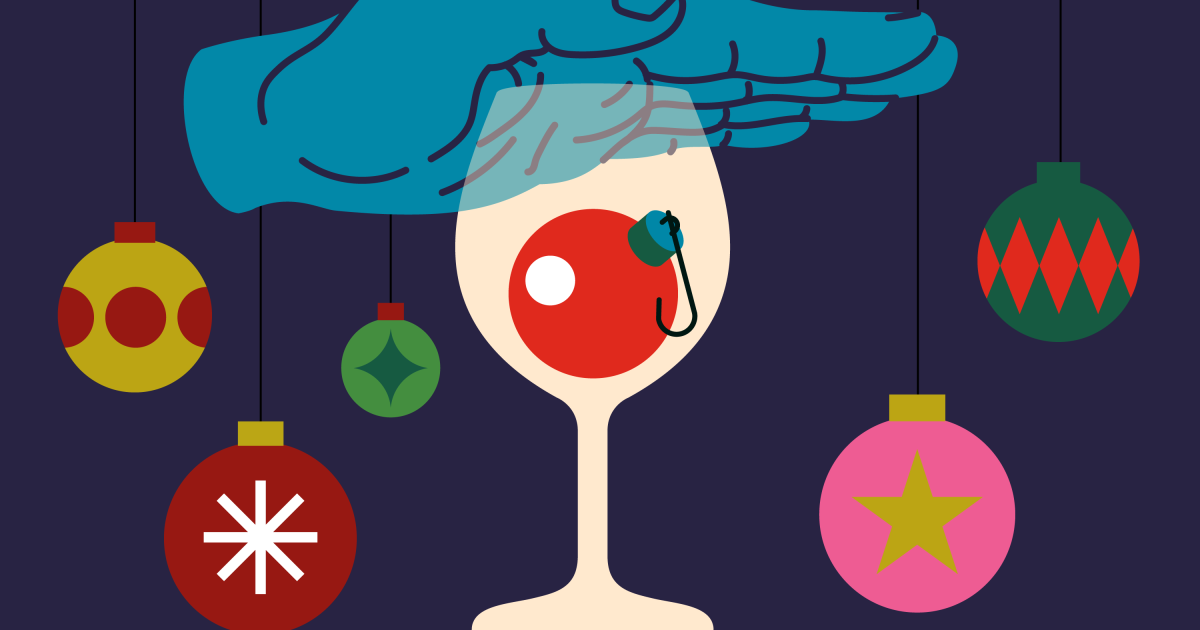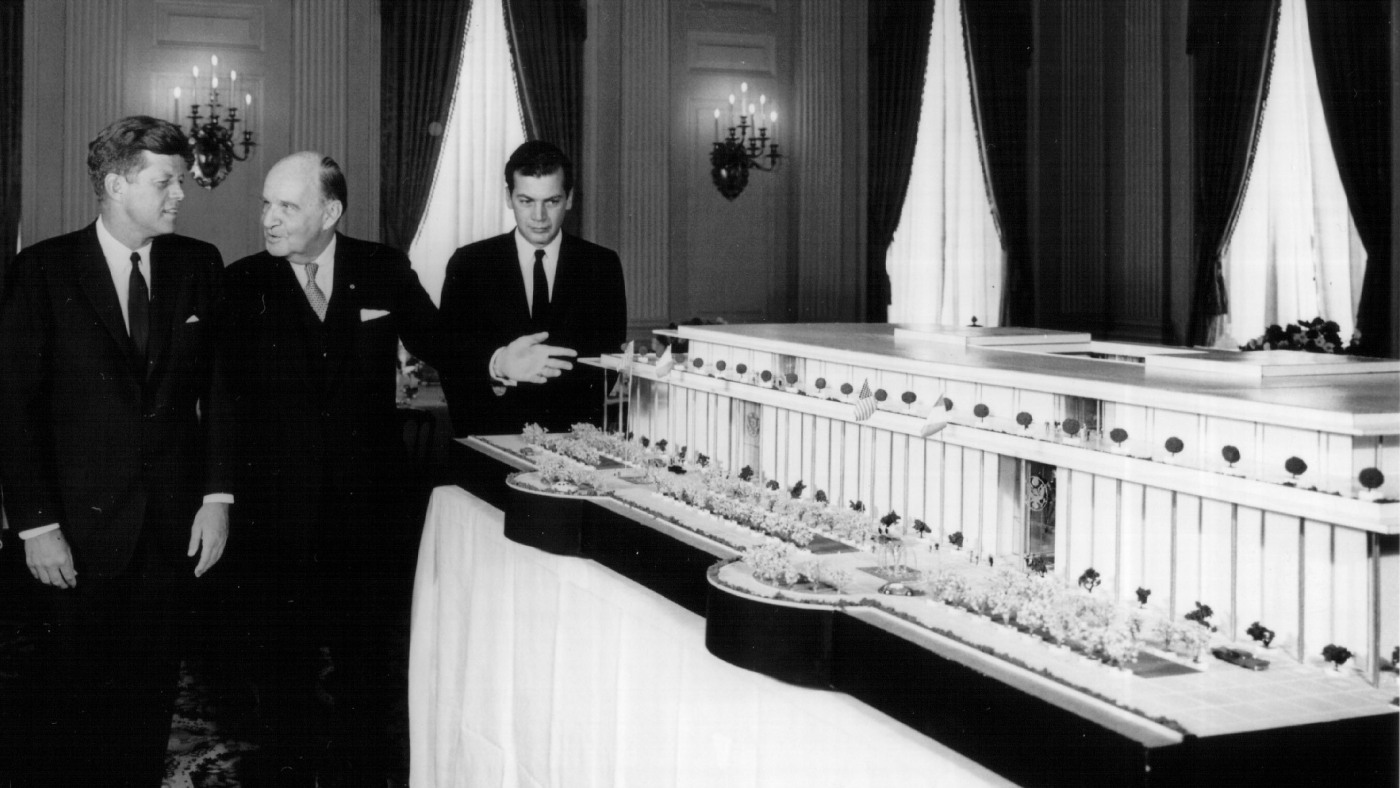Lifestyle
You don’t have to drink to feel festive. Here are 4 tips for cheery and sober holiday celebrations

I covered my empty wine glass as the Italian waitress made her rounds, a bottle of Chianti in hand. “I’m not drinking right now,” I said, even though I was on my honeymoon in Tuscany.
Earlier this year, I decided to take a break from alcohol, which also happened to be around the same time my husband and I booked our honeymoon in Italy. I hadn’t expected my decision to be longlasting. I thought I’d be back to imbibing by the time I went on my trip, but three months of sobriety quickly became six.
It felt strange to board the plane for my vacation without pregaming at the airport with my usual Grey Goose dirty martini and just as weird to not have a glass of red wine with pasta, but doing so ended up enhancing my trip and confirmed that my decision to stop drinking was a good one. Without alcohol, I slept great, lost a few pounds and felt less anxious. I suddenly had more time in my day to write, take yoga classes and read novels — things I loved to do but struggled to fit into my schedule. Before I knew it, I had decided to go a year without alcohol.
I’m not alone in my decision to cut back. Studies show that adults under 35 are drinking less than they have in prior decades and a growing number of Americans are sober curious. It’s always tough to stay sober, and it becomes even more of a challenge during this time of year, when there’s a joyful feeling in the air and practically everyone around you is raising a glass to celebrate.
Having a drink might feel good in the short-term, but the long-term effects of alcohol can often be damaging, according to Brianda Gonzalez, founder and CEO of The New Bar, a Los Angeles-based retailer of nonalcoholic beverages.
“You never regret doing the right thing for yourself, but it’s often so much easier to do the thing that won’t feel so good tomorrow,” she said.
This is especially true during the holidays.
“Alcohol has been around forever, and we’ve been taught to appreciate it as almost an essential or a given that it’s going to be part of any celebration,” she said.
I almost caved plenty of times the first month of sobriety, but it became a little easier when I built new routines into my schedule: happy-hour hikes and ice cream in lieu of nightcaps. I even called my local cocktail bar and asked them to make me a bottle of mocktails to-go. That said, one thing I couldn’t ever figure out was how to celebrate an occasion — whether a holiday party, family get-together or wedding without alcohol. How does one feel festive without Champagne? I consulted experts for tips.
1. Experiment with alcohol substitutes
First and foremost, get creative, says Gonzalez. Using fresh, seasonal ingredients can transform a nonalcoholic drink from a self-imposed alternative into something that feels special, whether it’s a persimmon gin fizz or a spiced whiskey sour. Giving your drink a beautiful garnish and serving it in a fancy glass also helps. By enhancing the sensory experience, you can mimic the pleasure that comes with having a drink and replicate the sophistication of a craft cocktail.
On the sparkling nonalcoholic front, Gonzalez recommends Prima Pavé Blanc de Blanc, a nonalcoholic wine produced in northeastern Italy, and French Bloom’s La Cuvee, which “feels really, really elevated and special for a super celebratory moment,” she said. “It tastes like a vintage Champagne.”
It’s no longer uncommon to see mocktails on the menu at your favorite restaurant or bar. In Irvine, Solstice seasonally switches up its mocktail list every three months and flavors drinks with house-made shrubs and syrups. If it’s glamour you’re after, check out the Wolves downtown, which offers affordable cocktails on par with the real thing under a historic domed stained glass ceiling. For more spirit-free retail locations, check out Soft Spirits in Silver Lake, which has an adaptogenic section and sells a Spritz Italiano from L.A.-based De Soi (co-founded by Katy Perry and Morgan McLachlan).
2. Set boundaries and stay active
The holidays are a tough time for both the sober among us and those who want to drink less, said Ann Dowsett Johnston, a psychotherapist specializing in addiction. She recommends arriving at a party with your own nonalcoholic beverage and giving yourself permission to leave the party early and get a good night’s sleep.
“As soon as people start repeating themselves or slurring, you are going to want to go home,” Johnston said.
Another tip: Plan activities that don’t revolve around sitting and drinking, like going for a hike or checking out a new museum.
“I think that can be a really helpful way to have a more balanced holiday season while still feeling like you’re celebrating and participating in things that bring you joy,” Gonzalez said.
When I was in Tuscany, my husband and I went on misty afternoon walks through olive orchards and got out our birding apps to identify the European robins chattering in the background. We sipped post-lunch cappuccinos in small Tuscan towns, read the books that we never had the time to finish and had a few good laughs using Google Translate to order meals in Italian. In Rome, I woke up with enough energy to walk six miles, from the Piazza Navona to the Roman Forum. And given that it was our honeymoon, it’s worth mentioning that sober sex is way better than the drunken version.
3. Resist FOMO
Even with the clear benefits that came from being sober on my honeymoon, I still felt like I was missing out on something come dinnertime, surrounded by wine bottles on every table and laughter echoing off all corners of the room. That’s a common feeling, Johnston said.
“I think often when we give up drinking, we go into scarcity mode,” said Johnston, who’s been sober for 16 years and wrote about her experience in her 2013 book “Drink: The Intimate Relationship Between Women and Alcohol.”
She suggested writing a gratitude list of five things you’re thankful for every morning. It might sound quaint, but it works. Sobriety is always one of the things I’m thankful for when I journal every morning. Whenever I’m feeling the temptation to drink, I think about having to face myself on the page. I know that I won’t ever regret not having a drink. Sobriety brings the certainty I need in my life right now.
4. Give yourself credit — and grace
I’ve tried plenty of mocktails, but what comes closest to that celebratory feeling for me is hitting the 28th day of the month — my sobriety marker. Every time the date rolls around, it feels like a celebration. Strangely, it often arrives when I’d normally be celebrating with alcohol: my birthday, a writing retreat with friends, even my honeymoon. Seeing that date in my journal and writing that I’ve made it another month feels miles better than popping the cork off a bottle of Dom Perignon.
That said, if you’re trying to be sober but slip up and have a drink, don’t beat yourself up. Just try again. In previous years, I couldn’t complete Dry January, but for some reason, I’ve been able to stay sober this time around.
“You get to start fresh every day, and you’re developing a muscle,” Johnston said. If you’re counting your drinks and measuring each five-ounce glass of wine, you’re still drinking mindfully.
This holiday season, I’m planning to see friends and family, even though alcohol will be at the table, too. I know I’ll probably feel the same way I did in Italy — as if I’m missing out on something — but I also know that the feeling will pass. By the time New Year’s Eve rolls around, I’ll get to write in my journal that I haven’t had a drink in nine months. And that feels like something worth celebrating, bubbly drink or not.
Betsy Vereckey’s’ debut memoir is forthcoming next fall from Rootstock Publishing. She lives in Vermont with her husband and four boisterous terriers.

Lifestyle
It was called the Kennedy Center, but 3 different presidents shaped it

President John F. Kennedy, left, looks at a model of what was later named the Kennedy Center in Washington, DC., in 1963.
National Archives/Getty Images
hide caption
toggle caption
National Archives/Getty Images
On Thursday, the Kennedy Center’s name was changed to The Donald J. Trump and the John F. Kennedy Memorial Center for the Performing Arts.

By Friday morning, workers were already changing signs on the building itself, although some lawmakers said Thursday that the name can’t be changed legally without Congressional approval.
Though the arts venue is now closely associated with President Kennedy, it was three American presidents, including Kennedy, who envisioned a national cultural center – and what it would mean to the United States.

New signage, The Donald J. Trump and The John F. Kennedy Memorial Center for the Performing Arts, is unveiled on Friday in Washington, D.C.
Jacquelyn Martin/AP
hide caption
toggle caption
Jacquelyn Martin/AP
The Eisenhower Administration
In 1955, President Dwight D. Eisenhower first pursued building what he called an “artistic mecca” in Washington, D.C., and created a commission to create what was then known as the National Cultural Center.
Three years later, Congress passed an act to build the new venue with the stated purpose of presenting classical and contemporary music, opera, drama, dance, and poetry from the United States and across the world. Congress also mandated the center to offer public programs, including educational offerings and programs specifically for children and older adults.
The Kennedy Administration
A November 1962 fundraiser for the center during the Kennedy administration featured stars including conductor Leonard Bernstein, comedian Danny Kaye, poet Robert Frost, singers Marian Anderson and Harry Belafonte, ballerina Maria Tallchief, pianist Van Cliburn – and a 7-year-old cellist named Yo-Yo Ma and his sister, 11-year-old pianist Yeou-Cheng Ma.

In his introduction to their performance, Bernstein specifically celebrated the siblings as new immigrants to the United States, whom he hailed as the latest in a long stream of “foreign artists and scientists and thinkers who have come not only to visit us, but often to join us as Americans, to become citizens of what to some has historically been the land of opportunity and to others, the land of freedom.”
At that event, Kennedy said this:
“As a great democratic society, we have a special responsibility to the arts — for art is the great democrat, calling forth creative genius from every sector of society, disregarding race or religion or wealth or color. The mere accumulation of wealth and power is available to the dictator and the democrat alike; what freedom alone can bring is the liberation of the human mind and spirit which finds its greatest flowering in the free society.”
YouTube
Kennedy and his wife Jacqueline were known for championing the arts at the White House. The president understood the free expression of creativity as an essential soft power, especially during the Cold War, as part of a larger race to excellence that encompassed science, technology, and education – particularly in opposition to what was then the Soviet Union.
The arts mecca envisioned by Eisenhower opened in 1971 and was named as a “living memorial” to Kennedy by Congress after his assassination.
The Johnson Administration
Philip Kennicott, the Pulitzer Prize-winning art and architecture critic for The Washington Post, said the ideas behind the Kennedy Center found their fullest expression under Kennedy’s successor, President Lyndon B. Johnson.

“Johnson in the Great Society basically compares the arts to other fundamental needs,” Kennicott said. “He says something like, ‘It shouldn’t be the case that Americans live so far from the hospital. They can’t get the health care they need. And it should be the same way for the arts.’ Kennedy creates the intellectual fervor and idea of the arts as essential to American culture. Johnson then makes it much more about a kind of popular access and participation at all levels.”
Ever since, Kennicott said, the space has existed in a certain tension between being a palace of the arts and a publicly accessible, popular venue. It is a grand structure on the banks of the Potomac River, located at a distance from the city’s center, and decked out in red and gold inside.
At the same time, Kennicott observed: “It’s also open. You can go there without a ticket. You can wander in and hear a free concert. And they have always worked very hard at the Kennedy Center to be sure that there’s a reason for people to think of it as belonging to them collectively, even if they’re not an operagoer or a symphony ticket subscriber.”

The Kennedy Center on the Potomac River in Washington, D.C.
Hulton Archive/Getty Images
hide caption
toggle caption
Hulton Archive/Getty Images
Kennicott estimated it will only take a few years for the controversies around a new name to fade away, if the Trump Kennedy moniker remains.
He likens it to the controversy that once surrounded another public space in Washington, D.C.: the renaming of Washington National Airport to Ronald Reagan Washington National Airport in 1998.

“A lot of people said, ‘I will never call it the Reagan National Airport.’ And there are still people who will only call it National Airport. But pretty much now, decades later, it is Reagan Airport,” Kennicott said.
“People don’t remember the argument. They don’t remember the controversy. They don’t remember the things they didn’t like about Reagan, necessarily. . . . All it takes is about a half a generation for a name to become part of our unthinking, unconscious vocabulary of place.
“And then,” he said, “the work is done.”
This story was edited for broadcast and digital by Jennifer Vanasco. The audio was mixed by Marc Rivers.
Lifestyle
Fashion’s Climate Reckoning Is Just Getting Started

Lifestyle
The 2025 Vibe Scooch

In the 1998 World War II film “Saving Private Ryan,” Tom Hanks played Captain John H. Miller, a citizen-soldier willing to die for his country. In real life, Mr. Hanks spent years championing veterans and raising money for their families. So it was no surprise when West Point announced it would honor him with the Sylvanus Thayer Award, which goes each year to someone embodying the school’s credo, “Duty, Honor, Country.”
Months after the announcement, the award ceremony was canceled. Mr. Hanks, a Democrat who had backed Kamala Harris, has remained silent on the matter. On Truth Social, President Trump did not hold back: “We don’t need destructive, WOKE recipients getting our cherished American awards!!!”
-

 Iowa6 days ago
Iowa6 days agoAddy Brown motivated to step up in Audi Crooks’ absence vs. UNI
-

 Iowa1 week ago
Iowa1 week agoHow much snow did Iowa get? See Iowa’s latest snowfall totals
-

 Maine4 days ago
Maine4 days agoElementary-aged student killed in school bus crash in southern Maine
-

 Maryland6 days ago
Maryland6 days agoFrigid temperatures to start the week in Maryland
-

 Technology1 week ago
Technology1 week agoThe Game Awards are losing their luster
-

 South Dakota6 days ago
South Dakota6 days agoNature: Snow in South Dakota
-

 New Mexico4 days ago
New Mexico4 days agoFamily clarifies why they believe missing New Mexico man is dead
-

 Nebraska1 week ago
Nebraska1 week agoNebraska lands commitment from DL Jayden Travers adding to early Top 5 recruiting class




















